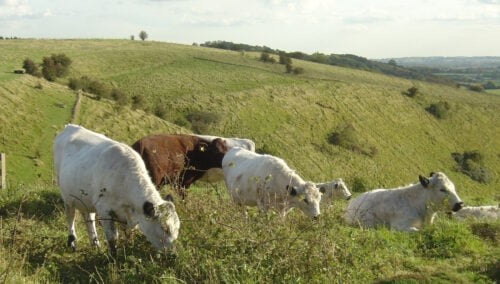Final preparations have been taking place this week for the Society of Landscape Studies conference with which the Centre has been heavily involved. The conference on the Saturday is taking place this weekend at St Paul’s church, Canterbury, with the Sunday field trip to the Dover Western Heights and Old St Albans Court, Nonington, at the kind invitation of Peter Hobbs. So please look out for the report in next week’s blog.
I’ll get to the Nightingale Lecture 2025 in a moment but first as well as the SLS conference this weekend, the weekend after the CKHH will be at two places. Kieron and Jason will be at the Medway History Showcase 24 at the Royal Engineers Museum at Gillingham with a stall and for Jason’s presentation on memory and identity in Kent maritime communities during the period around c.1600, while I’ll be at Aylesford giving a presentation at the KAS Historic Buildings conference on Kent’s medieval hospitals. Jason’s will be one of eight talks focusing on the history of the Medway area, and at the neighbouring stall will be Dr Diane Heath. There will be lots of other stalls showcasing the work of local history and similar groups and this fun day out will appeal to people of all areas interested in the history of Kent. All of this is free to pre-booked ticket holders, including free access to the beautiful Royal Engineers Museum and its café facilities. Tickets can be booked via https://re-museum.digitickets.co.uk/event-tickets/52565?catID=51206& and for further information or if your history or heritage organisation would like to exhibit on the day please email Pete or Jane at Medwayhs24@gmail.com
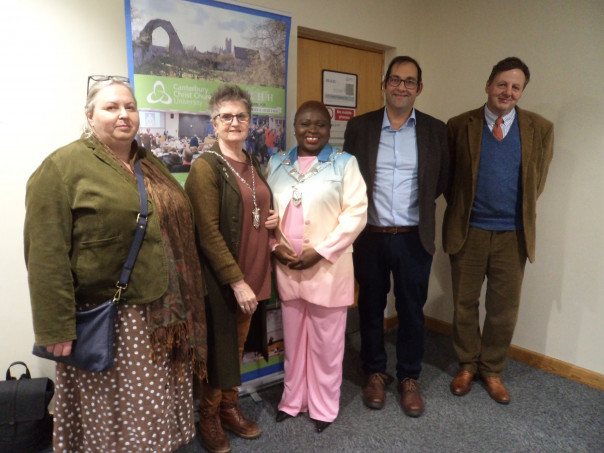
Turning to last night, firstly thanks to CCCU History for sponsoring the wine reception and to CCCU Hospitality for ensuring everyone was served quickly and efficiently. It was excellent to see some of the new MA Heritage students, most members of History with other colleagues from Theology and English, as well as people from Brook Rural Museum and members of the public from as far away as north-west Kent. The Museum’ display in the foyer with its new Memory Box audio clips drew considerable interest while people were enjoying their drinks and the CCCU Bookstall’s book display of Dr John Bulaitis’ new book The Tithe War in England and Wales, 1881–1936 was similarly appreciated, Craig selling all the copies he had before the lecture with several enquiries from people who intend to contact him about the special discount. Hopefully, this will mean further sales at this excellent price for such a great book.
We were delighted to welcome the Sheriff of Canterbury Cllr Mrs Keji Moses and her escort Mrs Carol Reed to the event and having opened proceedings once everyone was seated in the lecture theatre, I began with the Ian Coulson Memorial Postgraduate Awards which are available to those researching Kent’s history. These awards are named after a wonderful charismatic teacher and historian who made a major contribution to the county’s educational provision in many ways, as well as on the national stage. He sadly died almost a decade ago and remains sorely missed. The Sheriff presented certificates to two of the award holders this academic year: Kieron Hoyle and Jason Mazzocchi, and the audience joined the Sheriff in her congratulations to them.
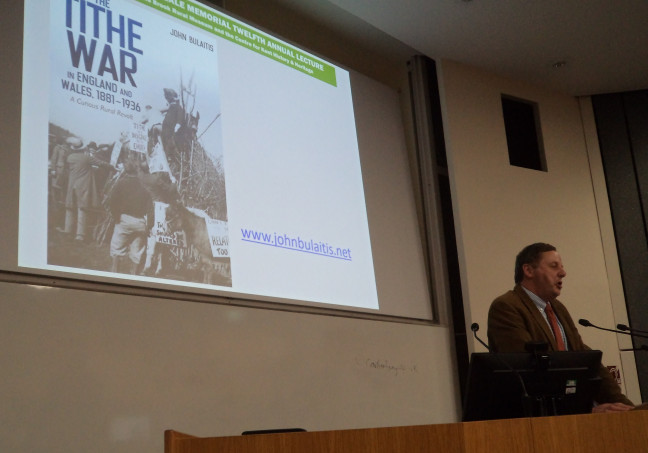
Next, I called on Professor John Nightingale, chairman of the trustees at the Museum and the son of Michael Nightingale, to provide some background information about the Brook Museum, its fantastic late 14th-century barn, fascinating collection of horse-drawn and associated farming equipment and round oast house. This he did splendidly as always, as well as mentioning the new exhibition on ‘Local Stories: Memories of Hopping around Brook and Wye, Kent’ that has been compiled from oral history interviews and historic photos by Dr Philippa Mesiano, Community Engagement and Project Manager at the Museum with the help of volunteers. The free exhibition will be at the Templeman Library, University of Kent from 18 October to 29 November.
This brought us to the eagerly awaited lecture by John Bulaitis who began his talk by thanking the many people in Kent who had been in touch with him over the last decade. They had generously provided access to scrapbooks, private papers and other materials often involving their own families who had been involved in the tithe war and in its aftermath until tithe was finally abolished in the 1970s. Much of this had come as a consequence of the many talks he has given on this topic over the same period, and he was also helped by students who undertook some of the archival research into newspapers and similar materials.
Furthermore, the project had been kickstarted by the Nightingale Lecture he had given in 2015 on ‘The battle of the ducks’ which initially he had seen as a piece of local history but had then come to realise that it was an opening into a fascinating nationally important period of modern history. For tithe with its roots in the medieval period had been almost completely abolished in mainland Europe during the 18th and early 19th centuries, but had through the national Anglican Church hung on in England and Wales, albeit with changes in terms of Queen Anne’s Bounty that had been instituted in 1704 to financially assist poorer clerics and the 1836 Tithe Commutation Act whereby tithe had change from a tenth of that produced to a rent charge on owner-occupiers based on a complex formula involving cereal prices. Indeed, the fantastic collection of 1840s tithe maps which are so useful for historians were produced because of this Act. This system had been part of the Whig reform programme and as a compromise it failed, as did the subsequent government legislation in 1891, 1918 and 1925. This meant that for many farmers tithe was viewed as an outdated and unfair system that had become a long-standing grievance, perhaps all the more so by the early 1930s because a considerable number of tenant farmers had since the Great Depression and the major fall in land prices managed to buy their farms, often from the great aristocratic landholders.
An associated bone of contention was that as well as the collection of such tithe payments for the Church, about a third of the recipients were secular tithe owners, tithe being a commodity that could be bought and sold. Among these latter tithe owners were Oxbridge colleges; public schools, many having been founded in the later medieval/Tudor period; hospitals; ancient guilds including London livery companies, and aristocratic landowners. In part this had accelerated due to the Dissolution but there had been such secular tithe holders even during the Middle Ages because the nobility had been involved in the establishment of parish churches.
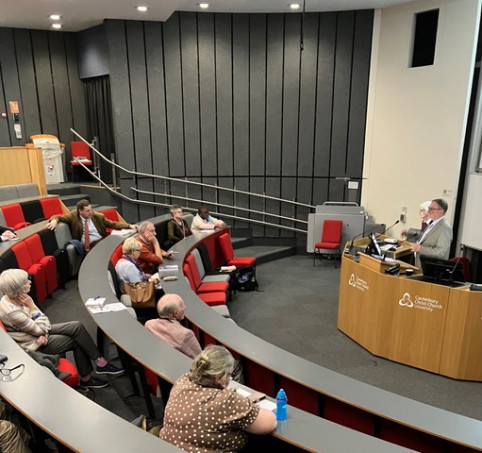
Coming back to the early 1930s, John introduced his audience to some of the major personalities among those who resisted tithe, whether as members of the National Tithepayers Association or as leaders in the East Kent Tithepayers Association. Among these ‘colourful’, often unconventional people were Evelyn Balfour, a farmer who stood trial for unlawful assembly, George Charles Solly, chairman of the East Kent Tithepayers Association, one time mayor of Sandwich, a member of the English fascists and farmer, and the Revd Roderick Kedward, a Methodist minister and farmer, ‘The Fighting Parson’ whose ducks (and other livestock) were distressed (ie taken) to cover his non-payment of the tithe due under the law and were the subject of ‘The battle of the ducks’.
In writing his book, John has framed it using this ‘battle’ where it forms the prologue and epilogue for while it has certain comedic elements, which were picked up by the contemporary national press, it highlights many of the serious injustices and dubious methods used by the establishment to uphold and implement their rights under the law of the time. Of particular concern was the formation by the Church Commissioners and other tithe owners of a company, General Dealers, to buy the goods of all sorts taken from farmers in lieu of tithe because other farmers would not get involved by buying their neighbour’s produce and other things. As a somewhat shady outfit, General Dealers was staffed primarily by ex-military personnel, hired for their fighting qualities because of the resistance they frequently met when taking away farmers’ possessions.
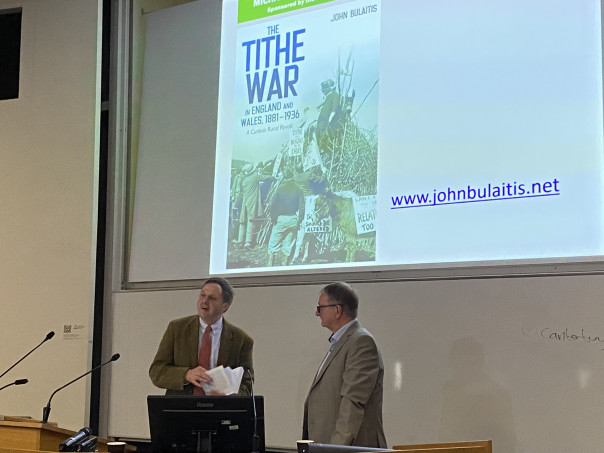
Due to the increasing level of resistance by farmers, a monthly list was compiled by the control committee to decide which farmers to distrain, and with the local court’s sanction General Dealers would then take on the case, reconnoitring the farm, checking on the likelihood of opposition and receiving aid from the police when they moved in to take the designated stock. A considerable number of Kentish farmers were hit in this way as the authorities tried to weaken resistance and frighten people into submission, including elderly farmers some of whom lost their furniture. Yet such actions inflamed public opinion and turned moderates into activists. Furthermore, the farmers’ passive resistance alongside direct action in some cases involving large numbers of people and the authorities’ insistence on instituting so many cases resulted in the court system becoming completely clogged up, thereby paralysing the recovery system. Consequently, even though this might be seen as a short ‘war’ in the early 1930s, as John said it does emphasise how a grass roots campaign with limited resources can take on national government and the agencies of the establishment and win, thereby bringing a change in the law.
John was very warmly applauded, and it was obvious how much the audience had enjoyed his lecture. Moreover, it sparked a series of interesting questions, and the discussion could have gone on but at this point I called of John Nightingale to give a vote of thanks before I ended the event by presenting John Bulaitis with a card and bottle of wine from his colleagues in History in appreciation of his years at Canterbury Christ Church now that he has retired.
Finally, for those interested in what happened during ‘The battle of the ducks’ as well as this whole fascinating episode in British history, I would strongly suggest getting hold of a copy of John’s book and you can do that through the CCCU Bookshop at: https://bookshop.canterbury.ac.uk/The-Tithe-War-in-England-and-Wales-1881-1936-A-Curious-Rural-Revolt_9781837651870
 Centre for Kent History and Heritage
Centre for Kent History and Heritage Sheila Sweetinburgh
Sheila Sweetinburgh 2076
2076